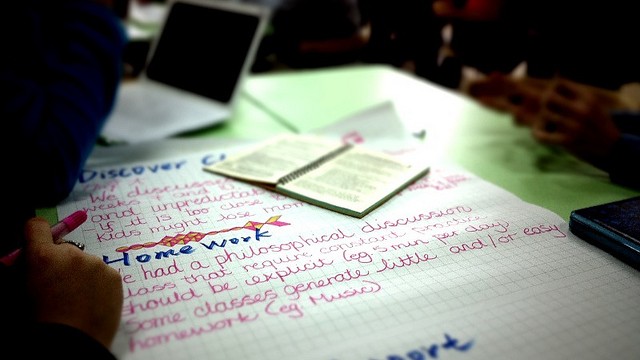Based on a recent spate of articles on homework, it’s clear that the homework wars -- how much? how often? -- are still topic of big interest to both parents and teachers. Some teachers hate to give homework; others see it as a vital necessity. But according to some research presented by Annie Murphy Paul, the question isn’t how much, but whether the homework teachers do give actually advances learning.
“A recent study, published in the Economics of Education Review,” Paul wrote in “How Can We Make Homework Worthwhile?”, “reports that homework in science, English and history has ‘little to no impact’ on student test scores. (The authors did note a positive effect for math homework.) Enriching children’s classroom learning requires making homework not shorter or longer, but smarter.” Paul goes on to describe specific practices, like spaced repetition (in which information is presented and repeated spaced out over time), retrieval practice (testing or quizzing not for assessment, but to reinforce material learned), and cognitive disfluency (“desirable difficulties” used to make learning stick) -- all memory/retrieval techniques that may help homework move beyond busy work and advance real learning.
But to get those elements to work, said Fires in the Mind author and speaker Kathleen Cushman, students must be motivated to do their homework in the first place. One example Cushman gave was creating a project so interesting and involved, students naturally wanted to keep working on it after the bell rang. She pointed to a chapter in the book where she describes a particular motivation for some high school students she interviewed, under the heading “Homework We Actually Want to Do”:
“Christina and Nicholas both remembered a global studies unit on the French Revolution in which students acted out a courtroom trial of the king and queen. The project brought even routine homework assignments to life, they said.
“I was the queen. So of course I wanted to do my homework all the time, so I could know the facts of what happened and what didn’t happen, know what I wanted to say when someone tried to say I did this or that thing. I could say, ‘Oh no, I didn’t!’ - because I’d read my homework,” said Christina.


